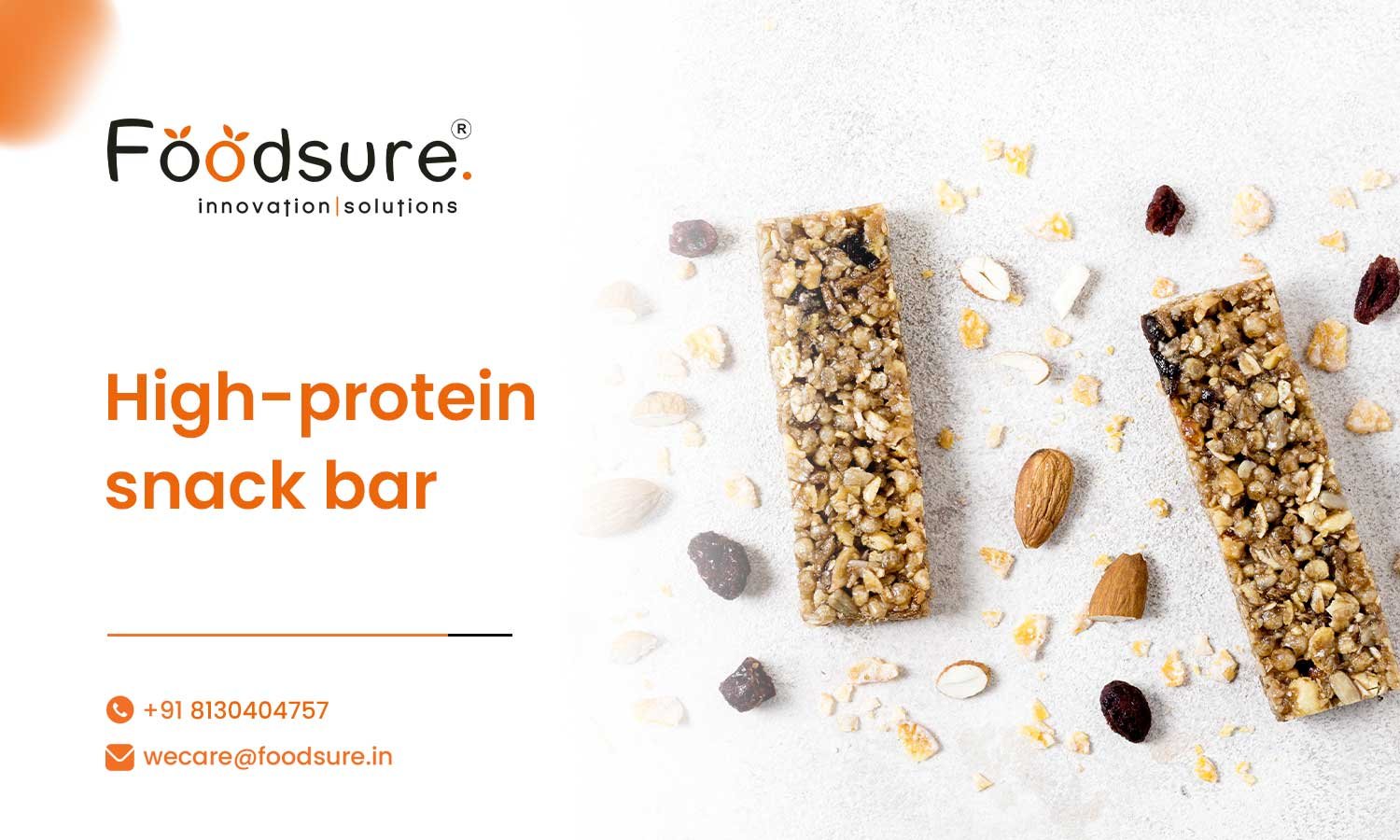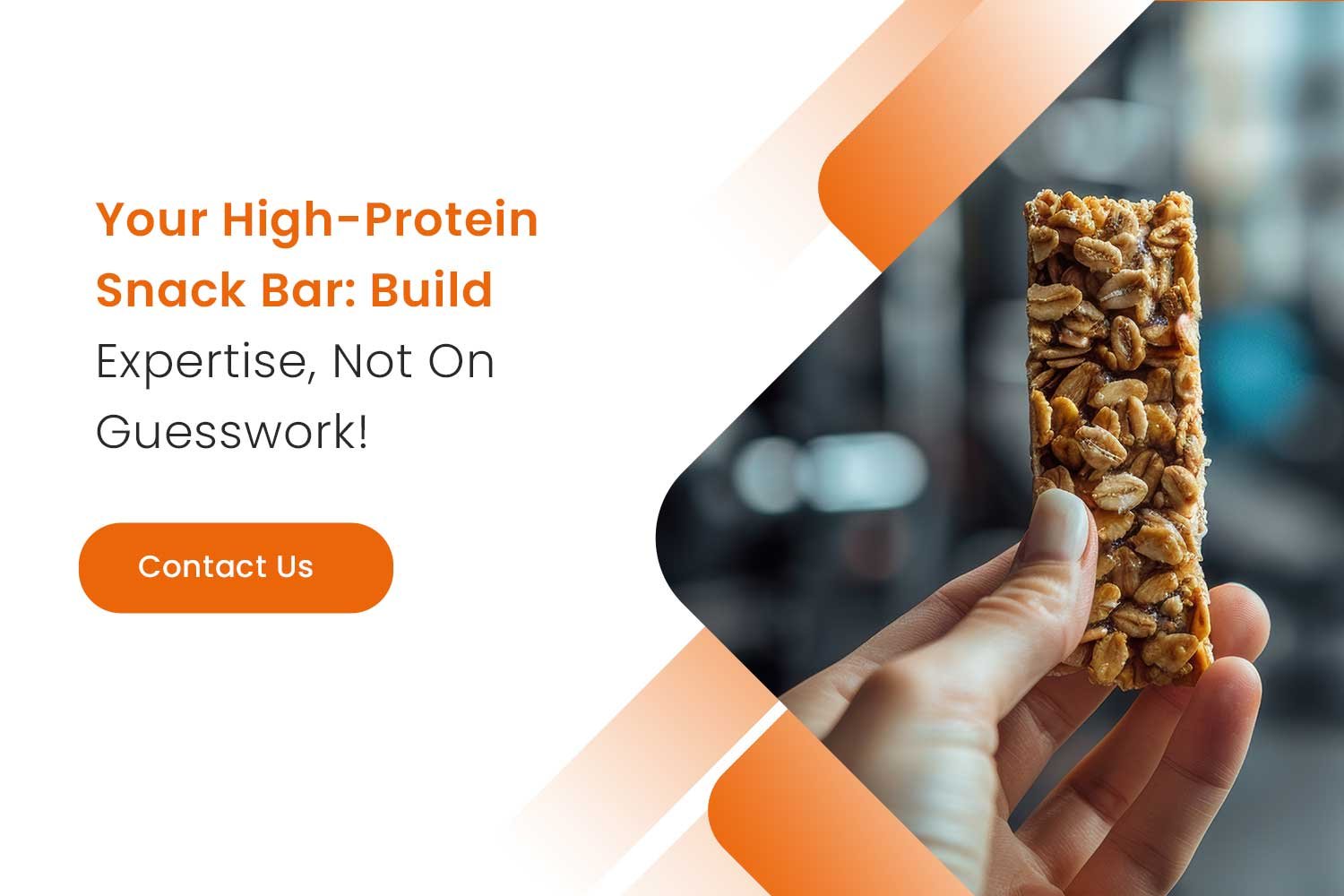The shelves are buzzing with high-protein snack bars, a clear sign that people nowadays are hungry for health, convenience, and foods that genuinely deliver. But behind every successful protein bar recipe development is a journey packed with different challenges. As experienced food consultants, we’ve seen promising ideas fail due to several challenges. This guide is not just a heads-up; it’s your roadmap to face those challenges, making sure your next high-protein bar doesn’t just hit the market, but takes off.
Mistake 1 – Lack Of Understanding Of The Impact Of Protein Source On Texture And Taste
Different protein sources have different properties, and these properties influence how the protein interacts with water, their ability to mix with fats and liquids, and how they behave with other parts of the snack bar.
- Whey Protein Isolate and Concentrate- They are good emulsifiers that can dissolve easily. But if you use them too much, they can quickly absorb water, resulting in the snack bar being dry and crumbly in texture.
- Casein- It gives a slower release of protein, but it can also leave a chalky or gritty feeling in the mouth. Its properties can also make the bar harder for a longer time.
- Soy Protein Isolate and Concentrate- They are good at emulsifying and can hold water, but sometimes they give a raw plant flavor in the aftertaste.
- Plant Proteins- Though they mostly have a gritty texture with different off-flavors, mixing different plant proteins can make the texture of the snack bar smooth.
Actionable Tip For You
- Explore new ingredients in the snack bar recipe formulation
- Consider protein modifications with the help of high-protein snack formulation experts
- Get in touch with formulation experts for proper mixing and proper taste tests.
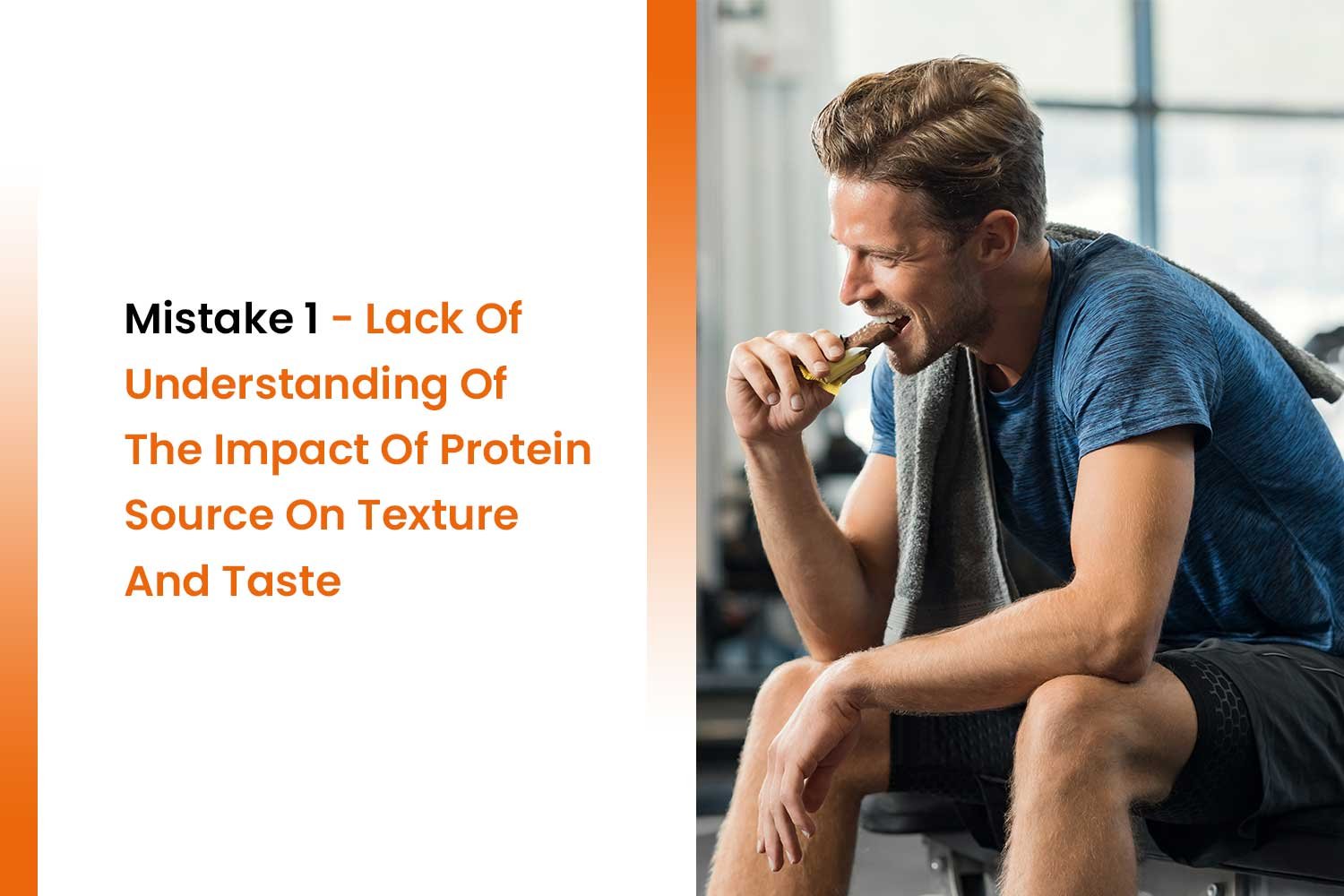
Mistake 2 – Ignoring Water Activity And Its Impact On Shelf Life
Water activity (aw) is most important while doing high-protein snack bar recipe formulation, as this impacts the shelf life and texture of the protein bar recipe development.
- Too much free water is not good- It can result in the growth of germs, and this can make your high-protein bar brown or its fats go bad. The law should be lower than 0.7 to keep it safe.
- Be careful with moisturizers- Ingredients that keep your bar moist help control aw. But if you use too much, your high-protein bar will feel sticky.
- Protein hydration behavior- Sometimes, water in the bar moves to different spots. This can make parts of the bar spoil or cause texture problems, like the whole bar getting hard.
Actionable Tip For You
- Implement AW testing at various stages of development and production, not just moisture content. Aim for an AW below 0.7 for extended shelf life.
- Barrier packaging is important to prevent moisture exchange with the environment, maintaining the desired aw levels within the bar.
- Carefully balance the amount of humectants to control aw without compromising texture and taste.
Mistake 3 – Not Able To Meet Changes In Texture Over Time
A high-protein snack can be perfect on day one, but can be hard, crumbly, or over-chewy later.
- Setting of starch – If starches are used as binders, they can make your bar experience bad over time, releasing water and making it hard.
- Protein gets clumpy – Proteins can clump together if they are used in high amounts and with changing temperatures. This can destroy the pleasant mouthfeel of the high-protein bar development and make it hard.
- Movement of moisture – Water can shift between different parts of the functional protein bar development, resulting to make some areas drying out and others becoming too soft.
- Fat Solidification: Fats can turn into crystals over time, resulting in a brittle texture or a powdery appearance on the surface.
Actionable Tip For You
- Choose ingredients known for maintaining their texture. For example, certain types of fibers or modified starches can help keep the bar soft.
- Properly control mixing, extrusion, and cooling temperatures to prevent protein changes and moisture loss during production.
- Include ingredients that act as softeners or humectants to maintain pliability. Glycerin and certain sugar alcohols work well for this.
Mistake 4 – Not Getting the Proper Flavor Of High-Protein Snack Bar Formulation
Proteins can give an undesirable taste that can destroy consumers’ experience. Making these flavors good that do not give artificial taste is an art and science process done by the high-protein snack bar formulation experts.
- Compounds of flavor: Proteins can release airborne compounds that can result in bad flavors. Fat spoilage can also generate rancid notes.
- Experience of taste: Bitterness in proteins comes from specific amino acids or small protein fragments interacting with consumers’ taste buds.
- How ingredients work: Some flavor compounds can attach to protein sites, making their taste less intense or changing the complete flavor profile.
Actionable Tip For You
- Invest in powerful flavor systems that are made for protein-rich products.
- Use agents that help to enhance the flavor profile of a functional protein bar. These can include natural flavors, plant extracts, or some amino acids.
- Enough sweetness can help mask bitterness, but artificial sweeteners should be used carefully to avoid an unpleasant aftertaste. Mixing natural sweeteners (like stevia, monk fruit, erythritol) can improve the complete sweetness profile.
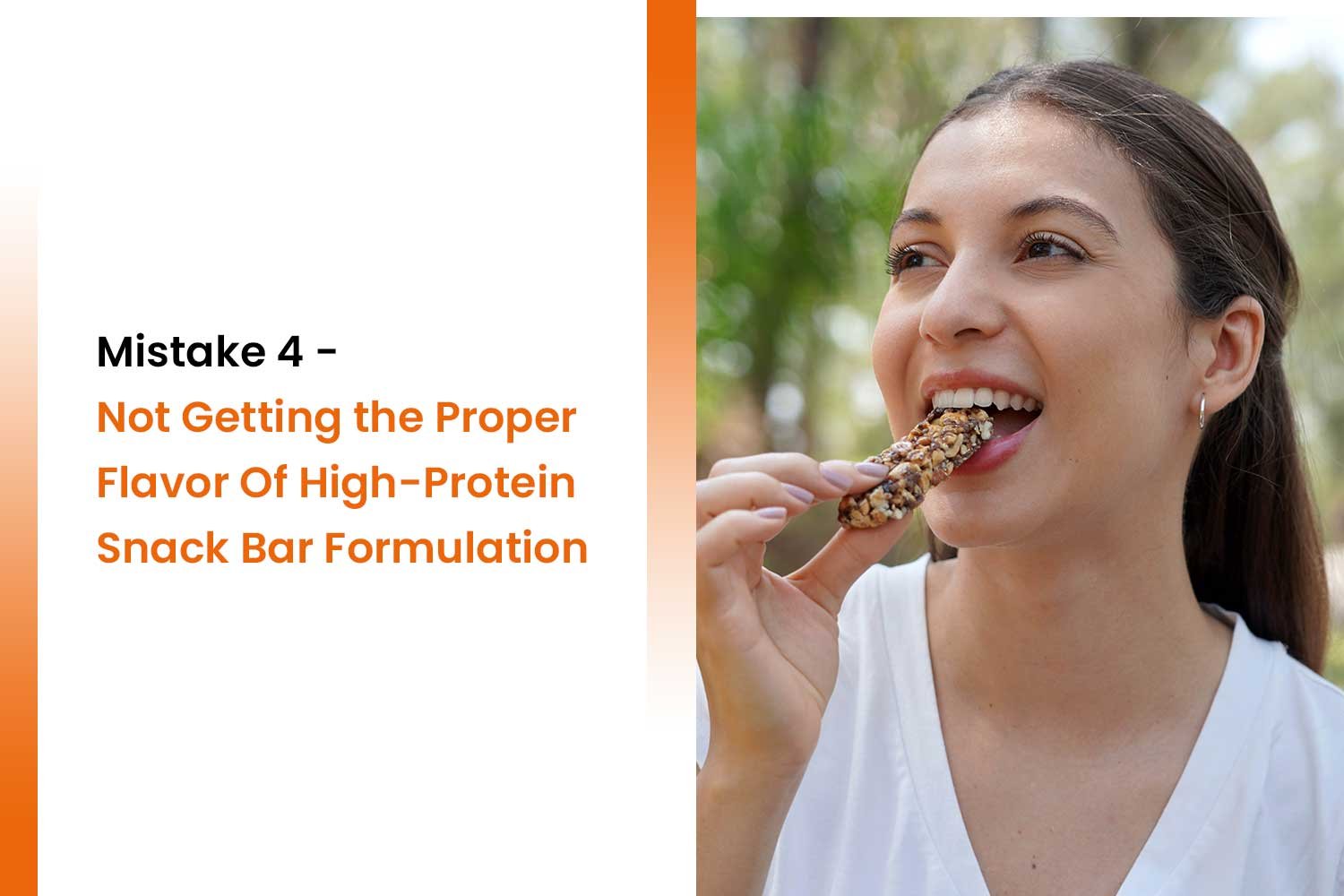
Mistake 5- Improper Balancing Of Nutrition And Quality Control
Though high protein is our main target but ignoring macronutrients and micronutrients can make your snack bar less appealing. With this, having consistent quality in different batches is also important to make the production line smooth.
- Balance of carbohydrate- They should be in a proper amount, as if they are added too little, it can make the high-protein bar dry and hard. They are important as they give fiber and health benefits to the snack bar.
- Micronutrients- Add important vitamins and minerals to make a functional snack bar for your consumers. It includes B vitamins or calcium.
- Management of heat- Proper control of heating and cooling rates is important to prevent protein changes, maintain the proper taste, and ensure the safety of food.
- Proper Mixing- Thorough mixing makes sure that the ingredients are evenly spread, impacting flavor, texture, and nutritional consistency.
Actionable Tip For You
- Define your nutritional goals, like post-workout recovery, meal replacement, and on-the-go snacks, and create your recipe accordingly.
- Choose ingredients that provide more than just protein, like fibres, micronutrients.
- Conduct trials on smaller batches of production equipment to spot issues before full-scale manufacturing.
- Implement regular checks, like, moisture content, water activity control in protein bars, weight, dimensions, and sensory attributes, on the complete production.
- Develop detailed SOPs for every step of the manufacturing process, from receiving ingredients to packaging.
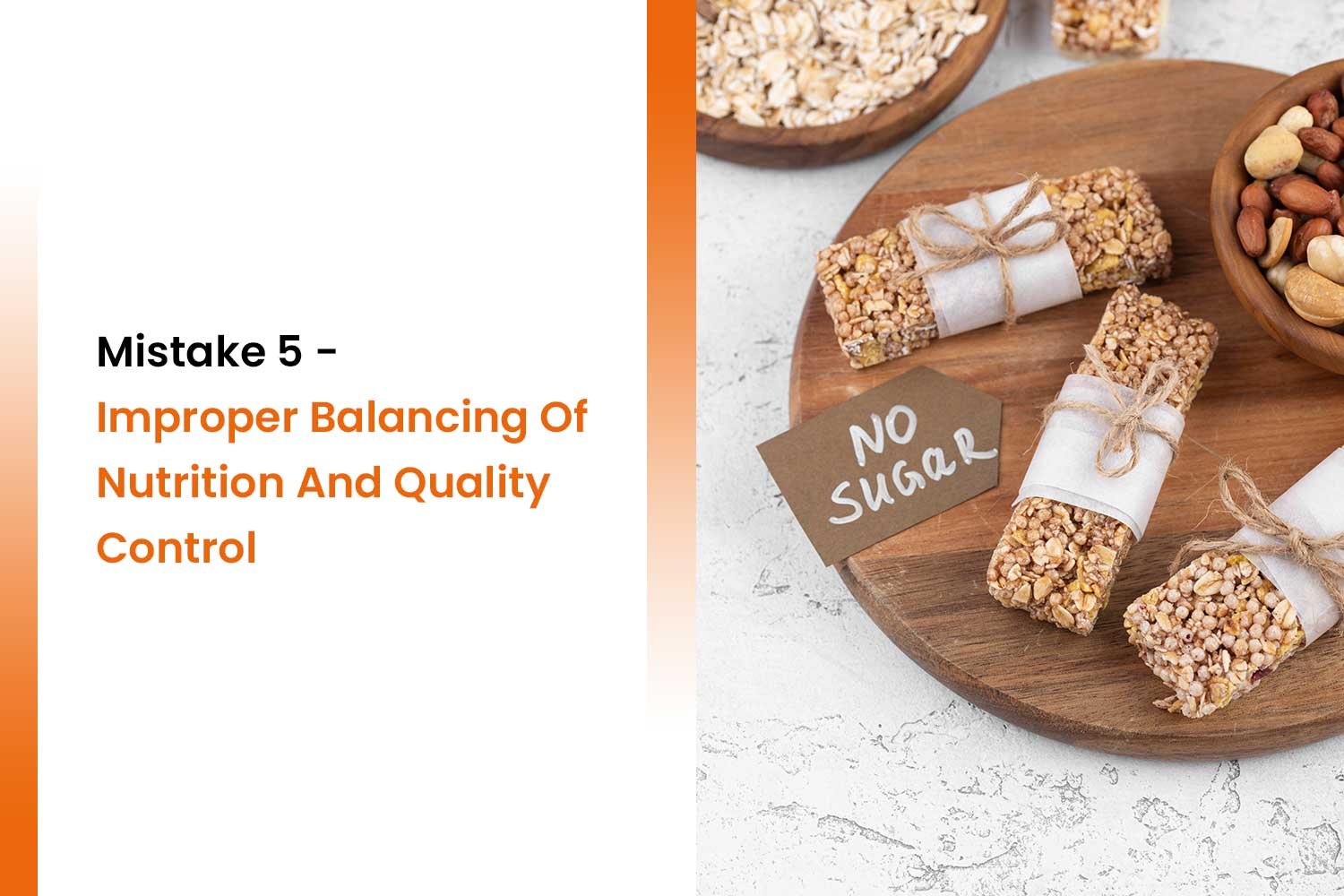
Explore More: Nutritious Protein Bar Recipe Formulation
Your High-Protein Snack Bar: Build Expertise, Not On Guesswork!
The shelves are packed. The completion is high. Your high-protein snack bar deserves to be truly stand out in the market.
We get it. Creating the best high-protein bar comes with so many challenges, from finding the perfect ingredients and water activity to perfect shelf life with consistent flavor and texture. We don’t just solve your problems, we will give solutions that are perfect for you. We will help you create the product that grabs attention and keeps customers coming back, making sure every single wrapper gives nutrition and a memorable experience. Reach out to our protein bar product development experts today! Contact Foodsure on +91 8130404757 for protein bar recipe development services.

